Ukraine invasion: Village hero who put down his bottle and became resistance spy
Igor Mykolaichuk was part of a secret network of Ukrainians in occupied areas who risked their lives to pass on information about Russian invaders.
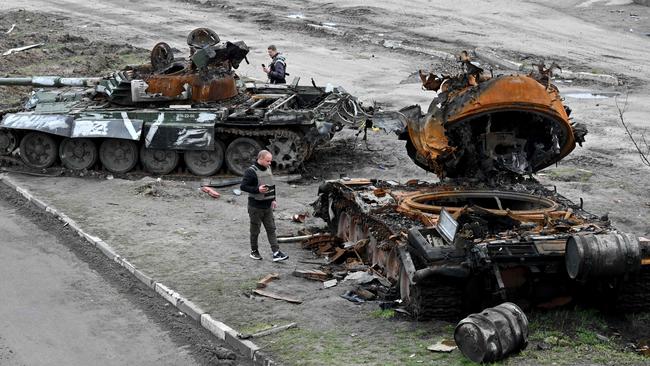
A skinny figure with a shock of grey hair and a soft voice, Igor Mykolaichuk was a familiar sight in the village. He spent most of his time pottering about his ramshackle house and the surrounding forest, often in a state of mild befuddlement because of the bottle he kept close at hand.
He knew the streets, the houses, the woodland paths. A long time ago, he had been a soldier in the Soviet army. That is what made him such a perfect Ukrainian spy.
When the Russians arrived – and almost everyone in the village fled – Mykolaichuk, 59, put down his bottle and began collecting information about troop movements, feeding it by phone to a local territorial defence contact, who passed it on to the Ukrainian military command.
He was part of a largely unknown network of ordinary Ukrainians who stayed behind under Russian occupation, risking their lives to spy on the Kremlin’s troops.
Many of them had been too old, poor, or vulnerable to leave. Some, like Mykolaichuk, refused to flee because they wanted to stay with their pets, in his case a rambunctious mongrel called Friend. They had not planned on becoming part of the resistance effort. But when the time came, they did not hesitate.
“This is the bravest man in the area,” said Oleksiy Lytvyn, the commander to whom Mykolaichuk had reported. On one occasion he had called Lytvyn from the second floor of his house to tell him about a Russian patrol passing his gate.
Mykolaichuk, grinning shyly, pushed his glasses up his nose. “I just did what they asked,” he said. Asked whether he had been afraid that the Russians would arrest him and find incriminating information on his phone, he laughed. “They didn’t, so it was fine. But probably I would have been killed.”
He and other informants helped the Ukrainian military to target Russian troops and armour in the roads and forests around Kyiv with drones, artillery or direct attacks that halted them here, at the gates of Kyiv.
Their success is reflected in the dozens of burnt-out Russian tanks and armoured vehicles littered around these woods. “They helped us verify and collect information, and then the headquarters would use it to plan strikes,” Lytvyn said. “They didn’t know the exact results of what their information was used for.”
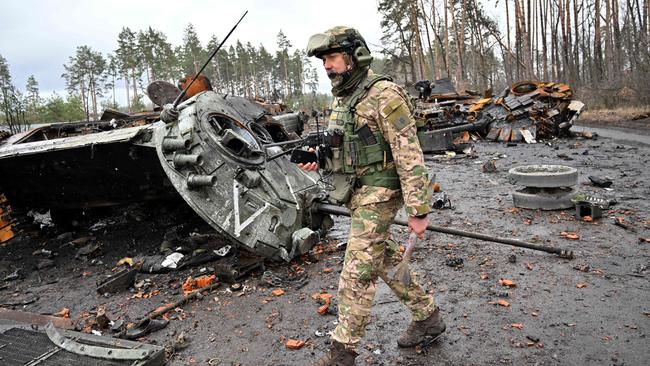
Lytvyn had made contact with Mykolaichuk through his son’s football coach, who lived next door to the older man in the village northwest of Kyiv.
With almost all the residents having escaped the area, Lytvyn asked Mykolaichuk whether he would be willing to send him photos and locations of Russian troops, and gather information about them from his remaining neighbours and friends. They spoke twice a day, at 10am and 5pm, on WhatsApp. Lytvyn then sent the information on to headquarters of the armed forces.
Mykolaichuk survived the occupation. Many others did not. The bodies of several hundred civilians have been found in the area, many of them in mass graves, others scattered on roads in the aftermath of the Russian army’s retreat and redeployment. Most of the dead were shot.
In this tiny hamlet, three men who supplied information to Ukrainian forces were captured and killed, their bodies dumped in the basement of a summer house before the Russian retreat. It is not known if they were killed for spying. Two of the victims, both friends of Mykolaichuk, had been tortured and bound before being murdered, according to two Ukrainian soldiers who saw their bodies.
Two villagers confirmed the account after being told about the scene in the basement by the owner of the house, who had fled the occupation but has returned now that the Russians have left.
When I visited the village two weeks ago, residents mentioned a house where three men had been bound and murdered by the Russians but I was not allowed to enter the area because of fears about landmines. Last week, however, I was let in.
The bodies had gone. But a large pool of blood remained, kept liquid by the water seeping onto the beige tiled floor, still dotted with jars of homemade pickles.
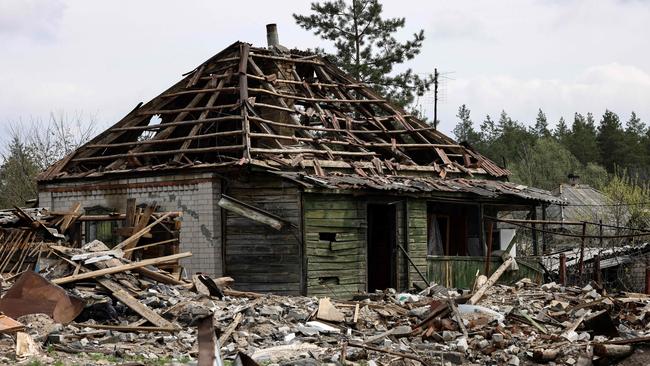
One of the victims, I discovered, was Anatoly Trohymets, a man in his late fifties. He had fought for the Soviet army, and lost an eye in Afghanistan. Among his friends, he was known for his generosity.
“He didn’t like having his photo taken, because he was shy of his eye,” said his friend Andriy, a rotund man wearing a cobalt beret and carrying a hunting rifle. “He was not lazy, he was a very brave, funny and happy person who loved his life.”
Trohymets had lived in the village for as long as anyone could remember, in a house next door to his brother, with a large dog. A few months before the invasion, he had befriended Sergiy, a man from Crimea who had moved to the area and rented a room in his house. The two men soon became friends.
Trohymets and Sergiy had been part of Mykolaichuk’s loose network of informants. When Mykolaichuk came to visit, they would tell him about the latest Russian movements they had observed, knowing that the information would be passed on to the Ukrainian high command.
One day, when they were out, Trohymets’s house was destroyed by shelling – burnt black and twisted inside out. After that, he spent most of his time at the home of Maria Dabizhe, an elderly woman with blue eyes who lived about a quarter of a mile down the road.
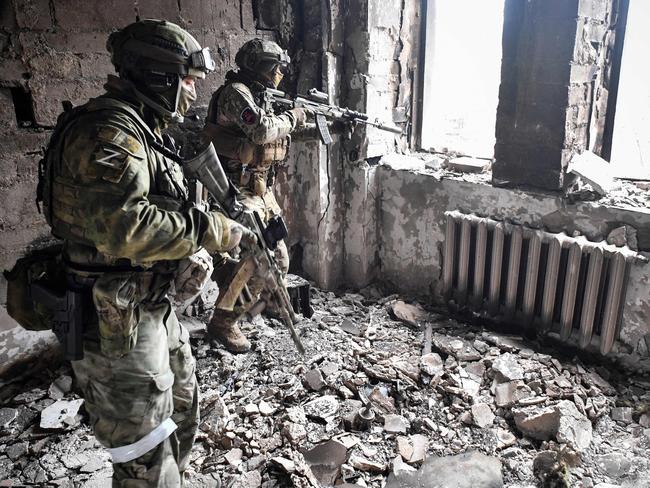
Dabizhe, Trohymets and Sergiy lived and cooked together for a time under the Russian occupation, one day eating a chicken whose leg had been blown off when a shell exploded near Dabizhe’s garden.
Then, in mid-March, Russian soldiers started coming to the house, asking her questions, sharing their ration packs with her. One day, Trohymets and Sergiy happened to be there when they arrived. “Anatoly told them that his house had been shelled, and they said, ‘Come with us and show us where it was’,” Dabizhe told me last week.
Trohymets and Sergiy left with the Russians and Dabizhe never saw them again. It was not until the Russians had fled the area at the end of March that her neighbour, Tatiana, told her what had happened.
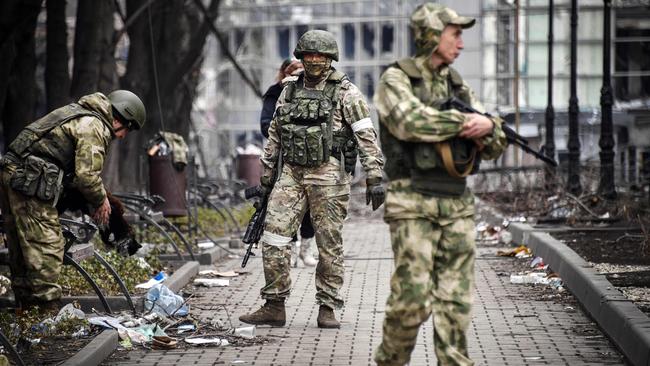
She had returned to her neat brick house after the Russian retreat to find three bodies in the basement where she usually kept her winter food stores.
Trohymets and Sergiy lay bound, bearing signs of torture: their fingernails had been pulled out and at least one of them had what looked like knife wounds in the stomach. Trohymets had a long screw drilled into his ear.
With them was the body of Fedir Petryniak, 44, a carpenter who lived about five houses away, who according to one of his friends and neighbours had been providing information to the Ukrainian forces about the location of Russian troops. “He was a good man,” said one of them, who did not wish his name to be published.
A photograph of Petryniak’s body, provided by his friend, showed him lying on the steps of the basement. His head was soaked in blood.
The account was confirmed by Pavel Fedorenko and Dimitry Dimytch, two fighters from the Ukrainian Territorial Defence Forces, who said they saw the three bodies with at least two of them showing signs of torture, in the basement of the house after the Russians fled.
“All three died with their hands tied and signs of torture on their faces, limbs and bodies,” said a police official.
“The Russians are animals,” said Dimytch.
The Sunday Times

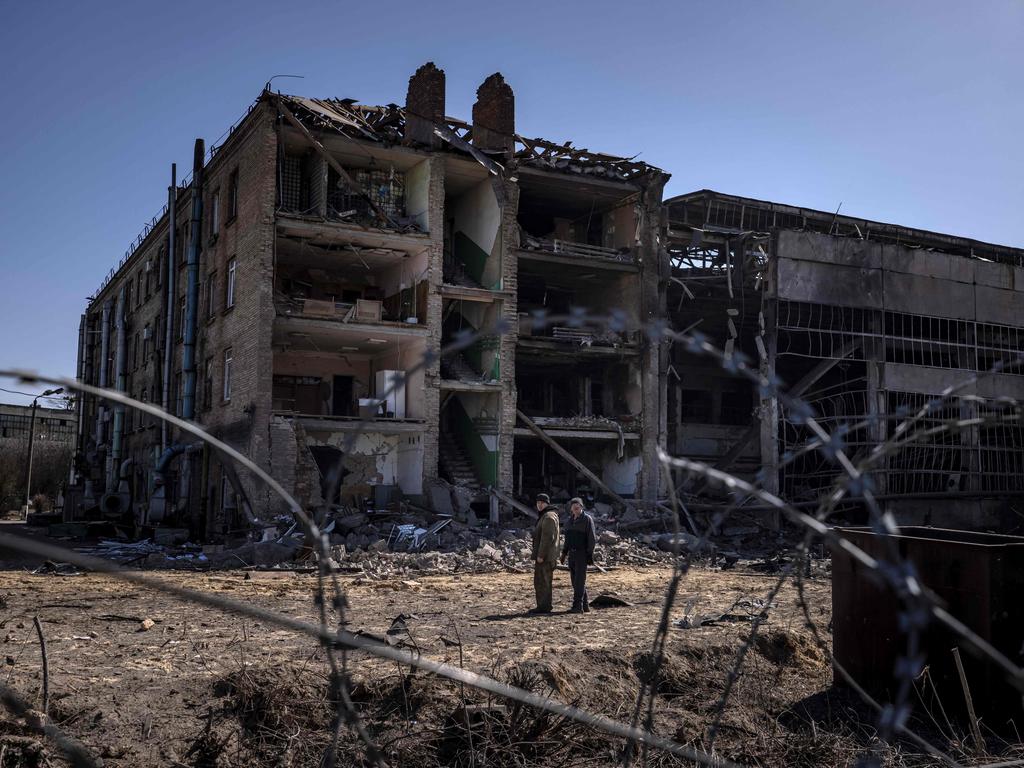





To join the conversation, please log in. Don't have an account? Register
Join the conversation, you are commenting as Logout